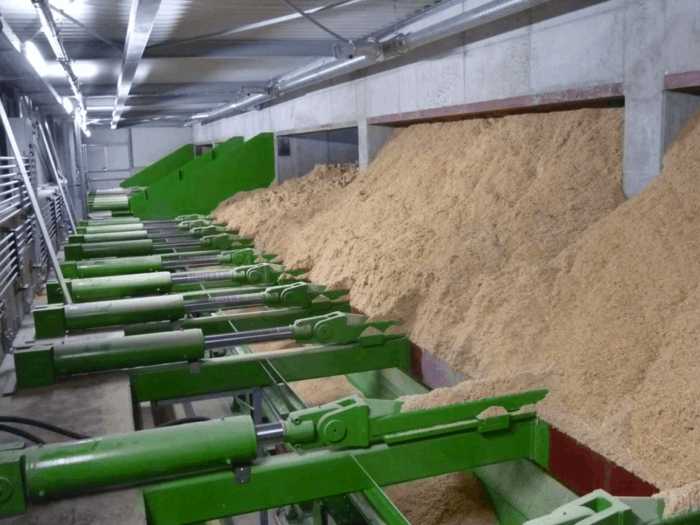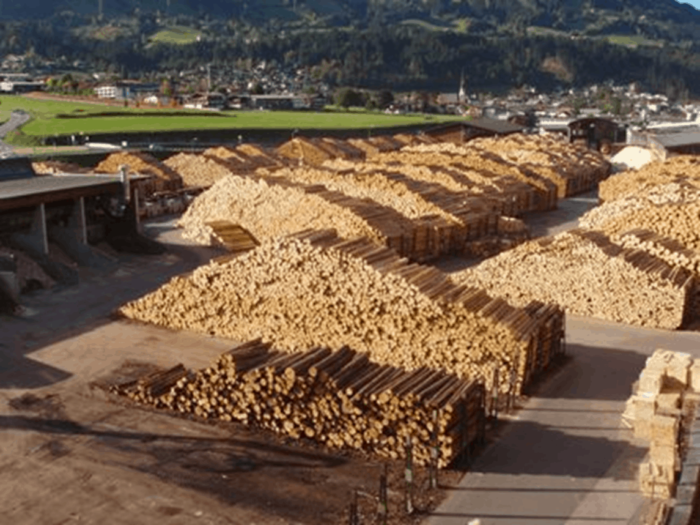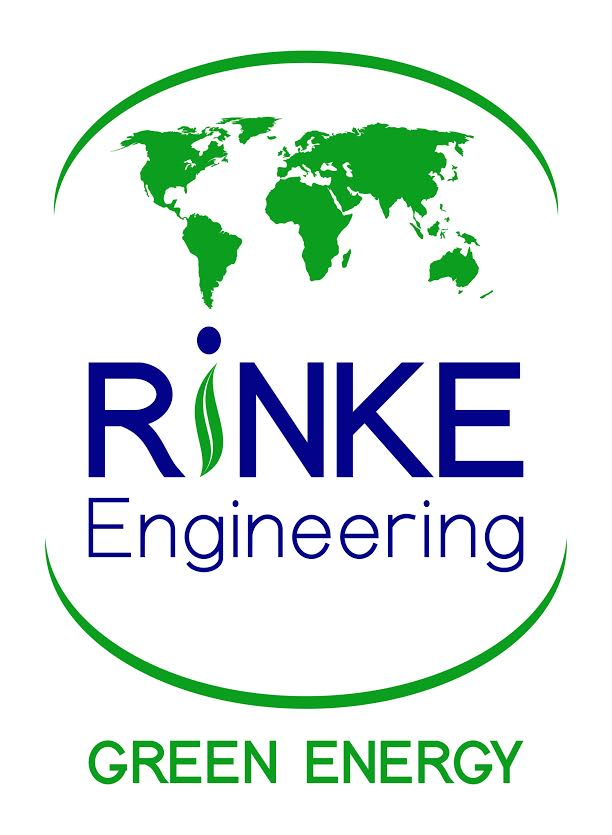Talking about energy market worldwide becomes more and more talking about sustainable energy and talking about biomass. We all agree after signing the Kyoto protocol the need to increase the use of renewable energy to fulfill our energy demand. All industrial countries investigate renewable energy sources. Solar and wind energy are produced close to the area of energy use and this energy is only traded through the electrical grid. There is only one international sustainable energy which is traded worldwide, and this energy is biomass. We at Rinke specialize in planing and building Biomass Heating Plants and Pellet Production Plants to efficiently and effectivley produce energy using biomass as a source.
Trading Biomass

Biomass is available in huge amounts around the world but unfortunately the energy source itself is often far away from the place of the energy demand and use. To align this, biomass is already shipped around the world. In the past, biomass is often traded as raw product or residues from biomass processes. In the last 15 years a huge amount of biomass is already traded as upgraded bioenergy like wood pellets or even higher upgraded to more advanced biofuel. The beginning of biomass trading was driven by a direct contact and the direct business relationship between the energy source (wood basked) and the end user of this energy. A marketplace for this type of energy was not existing and is still only available in a very small volume compared to fossil fuels. One example of a growing platform is (https://tradersbiomass.com). The implementation of a marketplace for standardized biomass like industrial wood pellets is now online. The volume of the market platforms is increasing year by year, but the far bigger volume is still traded in a B2B contract. The market knowledge and the sustainability criteria are the key driver to increase the volume for the B2B and on the market platforms in the future. To know where the pellets are produced and to know that pellets are not destroying any existing food production or any sustainable landscape is the most important part for electricity producers. They must document their way of production to the incentive supplier (countries controlled by parliament and voters). To fulfill this in a professional way they’re all certifying their biomass by an independent certification scheme like SBP (https://sbp-cert.org) or other. The most important trend of using biomass driven by CO2 pricing is the use of wood pellets in the industrial production and the decentralized heat production for local heat grids. The industrial production needs to decrease the CO2 footprint for their products, to fulfill the expectation of their clients to reach those targets. Often industrial producers changing their energy source from fossil fuels like coal or oil to industrial pellets. This trend needs development of the existing biomass trading platforms to give the end user for the industrial pellets more security when buying biomass and when investing in new energy converting units.
Production capacity

Looking to the available production capacity for wood pellets worldwide, we are seeing that Europe installed around 30 million tons of yearly production capacity. Europe is the biggest producer of advanced biofuel like pellets followed by North America with 21 million tons of yearly capacity. Another 11Mio. tons are produced in Asia and Oceania. All other continents offer only a small part capacity to the global pellet market. The potential is still unused in South America and Africa and in Russia as part of Europe and Asia. The investment in pellet production units will take place first in the areas where still residuals of sawmills are available and the transport logistics to the end user is price competitive. Therefore, we see that the existing wood baskets around the user of bioenergy must be developed in the first place. The huge demand on wood pellets driven by industrial offtake like electricity producer will often be fulfilled by finding the cheapest available biomass on a reasonable price of logistics and on a reasonable price on infrastructure investment. Saying this, we helped to install some of those huge investments in remote areas where a huge amount on biomass was still available on a low pricing. To develop low pricing biomass baskets you need to have a strong financial background to overcome the difficulties of installing a high efficient pellet plant with the huge output and having the offtake and the end use of your products ready for startup on the same time. Therefore, we see production increase for more smaller offtake or even to be traded on a biomass trading platform will be on a medium size investment, mostly not higher than 100 million euro.
Political trends
The biomass energy market is mostly driven by political circumstances as long as the direct impact on global climate changes is not affecting the industry itself. Political circumstances are often behind the need of giving the industry a new direction, we are still in the very beginning to decarbonize our live! Europe as an example has forced their members to increase the price of CO2 emission continuously. Unfortunately, the members are so far not willing to give this instrument the strength to really fulfill the target of CO2 reduction. The pricing of CO2 is also an easy way of giving each product a fair sustainability price. As with the crisis of COVID-19 the price of energy specially of fossil energy is right now on the price level of the 2000s we will not see huge effects on the CO2 pricing to reduce fossil fuel use. From our perspective we will not see in the near future political decisions to increase the demands for biomass or four advanced biofuels in a huge manner.
Industrial trends
Some industrial trends were also driven by market leader companies to upgrade their products to an international standard off producing in a sustainable, renewable and carbon neutral way. They also use the high level of sustainability in the advertising and are able to sell their products on a slightly higher pricing level to customers willing to invest in CO2 reduction targets. For all types of productions this new trend of seeing the total supply chain of any product is the most important instrument for any industrial decision maker. Selling this sustainability to clients is often easier as selling a more advantage product on a higher price level. If all industrial producers for products are going to be more sustainable, we are seeing a huge demand for the use of biomass, especially wood pellets.
Global and European trends
As the biggest trends of reaching sustainability and C02 reduction targets as fast as possible, we see that Europe is not the same for the 27EU members. Worldwide we see that Asia, driven by Korea and Japan, is forcing their use of wood pellets from sustainable sources around the world. China also increases their demands and their use of bioenergy rapidly. The European market for bioenergy, especially for wood pellets, is divided into two different types. The oldest type of wood pellets is the so-called residential wood pellet, which means that those pellets are used in private households to heat their home directly with renewable energy. The use of wood pellets is compared to the use of other biomass highly comfortable for the end user and comes very close to the luxury of having a gas or oil driven heating source but without the negatives of having a fossil fuel system. This type of wood pellets called DIN plus pellet or similar, is driven from Countries who have a centralized heating system or at least a stove system in the past. The most important countries for this increase of demand in Europe is Italy and France for the stove system and Austria or Germany for the boiler driven pellet demand. Converting from existing fossil fuel heating systems to a renewable, wood pellet driven system, is often supported by a strong investment scheme system. Specially Germany and Austria are offering huge incentives if households are changing their heating system to automatically driven wood pellets heat source seeing that this heat demand is the second largest energy demand. This trend will go on as we still have huge amounts of fossil fuel systems online which need to be changed when they are older than 20 or 25 years.
The use of industrial pellets as the second part of pellet types is often driven by direct incentives to the electricity producer. Those producers only invest in their existing fossil fuel driven system when they can`t run the existing plant for a longer time. Now we see that in Europe only Great Britain, The Netherlands and Poland offering those incentives to drive their coal power plants in a type of co firing or as 100% converted power units. If this trend is going to be a critical path for efficiency (old coal plants have only 35-45% efficiency) to reach CO2 reduction targets, it is more likely that those incentives will stop immediately after better solutions of using the high-quality pellets in a more efficient way is available (already available in medium size CHP with 85% efficiency or heating system with 100% efficiency).
Conclusion
Talking about efficiency will be the key player of finding the best home for the high-quality industrial pellets and biomass in total. All renewable energy sources will need to find best efficient use to be used is a long run.
Explaining all this to you gives you a small overview about the key points of using bioenergy and explained hopefully the advantages of bioenergy and biomass energy to all human being. In the future it is more than important that not only the production of renewable energy, like wind and solar will increase, we also need to implement in our energy system an easy storable renewable energy like biomass. We are your partner to gain this target. Contact us now!
